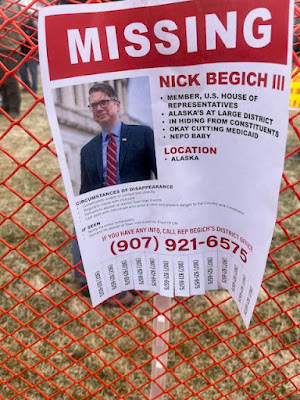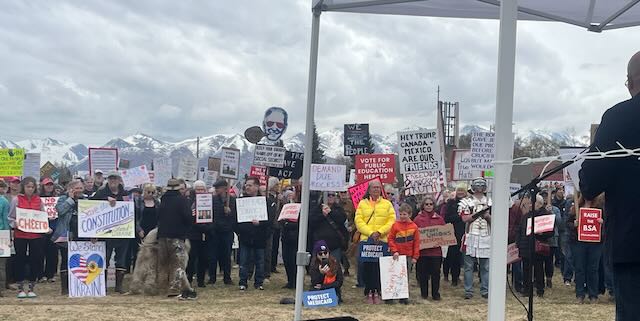[You'll figure out pretty quickly, I think, that I enjoyed reading this book. I wanted to read the next chapter as soon as I finished the previous one. Aside from introducing people and situations outside my normal realm, Ernesto Londoño raises lots of interesting legal and ethical issues.]
retreats/treatment centers. The focus is on psychedelics and their effect on people, mainly on people with serious hard-to-treat issues like depression, suicidal thoughts, trauma. But this gets more complex as the author, Ernesto Londoño, pulls in a number of related issues such as the conflict between running a spiritual retreat and a for profit enterprise, the psychological impacts of war, the conflict (in the US) between religious freedom and drug laws, how black market (my term, not his) psychedelic treatments serve patients who find standard medical approaches to their problems ineffective, which raises serious questions about why the established field of medicine took so long to find better ways to treat PTSD and other mental problems.
"Ayahuasca is prepared by boiling crushed chunks of an Amazonian vine called Banisgeriopsis caapi -which wraps around trees in the rainforest in serpent like formations - with the leaves of a shrubby plant called Psychotria viridis, or chacruna. The leaves contain the psychoactive compound, but when taken alone, an enzyme in the stomach neutralizes it. The vine, however, inhibits that metabolic process, inducing dramatic alterations in perception and sensations." (page 66)
The author previously worked at the Washington Post reporting on local DC police and court issues and as a war correspondent in Iraq and Afghanistan, and then as an editorial writer for the New York Times. The book begins when he was the New York Times Brazil bureau chief. So he's a serious reporter.
In the book, he also tells us a lot about his own life issues. His coverage of the ayahuasca retreats in the Amazon jungle to a ketamine clinic in San Diego includes his own drug experiences at the places he writes about. I think that gives him deeper insights than had he merely played the objective observer. He also is often the skeptic and raises issues with some of the places he visited and offers others' critical as well as positive reports. He interviewed a lot of people, both practitioners and academics studying psychedelics. (I know, 'a lot' is vague, but he's always stepping back to find out what others think as well as the what the owners, the employees, and participants have to say.) He tells us that he always identifies himself as both a participant and a journalist.
The book called out to me from the new books section at Loussac library. And while I came of age in the 60s, I didn't experiment beyond pot. Being a student in Germany for a year and after graduation a Peace Corps volunteer in Thailand was trippy enough for me. I haven't read Michael Pollan's book that reviews say strongly advocates for psychedelic experiences. So maybe this book would tell me what I need to know.
The book was a wild and informative ride. While the main vehicle was psychedelic experiences, those experiences lead us into lots of unexpected adventures with interesting people and interesting religious, legal, ethical issues not only of drugs, but also war and sexuality and trauma and medicine.
Most of the people Londoño describes come to these retreats to deal with depression, trauma, addiction and other mental disorders. This includes the author who, as the NYT bureau chief in Brazil finds himself lonely and depressed and decides to report on an Amazonian retreat and to test the curing powers of ayahuasca. In the posh Costa Rican retreat, much later in the book, a lot of the clientele are more well-to-do, but there's an emptiness in their lives. [As I wrote that, I thought that 'but' might not be the right word. Simple pursuit of wealth as Trump and Musk demonstrate, doesn't lead to happiness. But (again) Musk is reported to be addicted to MDMA (which is looked at later in the book) and that clearly hasn't had a therapeutic, enlightening effect on him.] We also get to USian retreats that incorporate as churches in hopes of avoiding the Drug Enforcement Administration and have focused on US veterans with PTSD and other war related traumas and who haven't found relief from nightmares and suicidal thoughts through VA psychiatrists or alcohol.
Londoño also consults regularly with scholars - through their written works and through personal interview - and gives us threads throughout the book about the twists and turns of the legal landscape of medical psychedelic experimentation and research - most notably with Nixon's 1971 War on Drugs prohibition, which shut down a lot of promising research.
There are also the discussions of how far back ayahuasca was used by Amazonian people - with claims ranging from thousands of years to hundreds.
We learn about the people who run the retreats and clinics, the people who own them, and the clients. It's not always pretty. There are stories of sexual impropriety, of death, but mostly of profoundly changed clients. Or is that positive response brought on by the group and organizer pressure to let go of one's doubts and embrace the ayahuasca so that one can get the full benefits? Londoño always raises these questions.
Are these really healing retreats or are these cults? This question bothers him, but he seems to conclude that since people leave, they aren't cults, even though the requirements to trust the facilitators and the drugs seem to overlap with cult like instructions. A question I had was about the people, the author included, who go to many retreats and keep imbibing the ayahuasca. In the author's case, he tells us there are other buried issues to be explored. (He also mentions that the concoction is foul to taste and usually induces vomiting, buckets provided.)
He talks about going to a gay only retreat and how that differed from the others. And as he writes about the problems other retreaters hope to heal, Londoño writes about his own demons. How he learned about mental health issues in his family growing up in Bogota, Columbia. After writing about the war traumas of veterans, he begins to think about the traumas he brought back from Iraq and Afghanistan as a correspondent.
The discussion of the veterans, fed up with the VA's inability to cure their PTSD, mentions at one point that it costs $230 billion a year for the Veterans Administration to treat PTSD! The vets he connected with did find a profound relief that the VA couldn't provide. But in the MDMA experiment we only hear about Chris and not the others in the experiment.
That cost of PTSD treatment doesn't tend to be mentioned in defense budget debates or to recruits. And that doesn't take into account the individual and cumulative costs to the individual veterans, and their families, whose lives are destroyed, even though their bodies work. At some point he mentioned that more military die of suicide than they do in battle.
Another telling comment came when interviewing Dr. Matthew Pava, who was in charge of research funding at the Defense Advanced Research Projects Agency in the Defense Department. And who approved a $27 million experiment that was searching for new compounds that change the brain without the hallucinogenic effects. What he really needs is a drug that will allow him to get soldiers back into battle quickly, and that doesn't seem to be likely with psychedelics.
"In recent years, he said, 28 percent of service members medically evacuated from frontline positions are sent home after being diagnosed with a mental health condition. According to a 2021 study, roughy 23 percent of active-duty service members had been diagnosed with depressive disorder, a rate far higher than that of the civilian population."[page 264]
Yes, there are depressing issues (but there's a cure for that now) but also very heartwarming stories of people who have overcome debilitating mental problems. The subtitle of the book - The Peril and Promise of Medicinal Psychedelics - is accurate.
So maybe I do need to go back to Pollan's book to find out why someone without depression and suicidal thoughts should use psychedelics. And I'd note, Londoño mentions a lot of other books on various aspects of psychedelic medicines.
NOTE: In the course of the book, we learn a lot about the author. He feels almost like a friend. And toward the end we learn that quit his job with the New York Times and he's moved in with his veterinarian boy friend in Minnesota to write the book and is unsure of what will happen next. And I wanted to know how that turned out. After I wrote this post, I googled Ernesto Londoño and found this New York Times article on today's LA ICE raids and citizen protests. The bio link says:
"I’m a reporter for The New York Times based in Minnesota, covering news in the Midwest and keeping a close eye on drug use and counternarcotics policy."





























